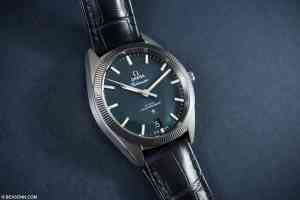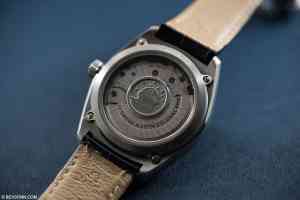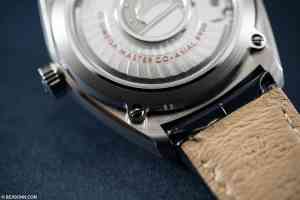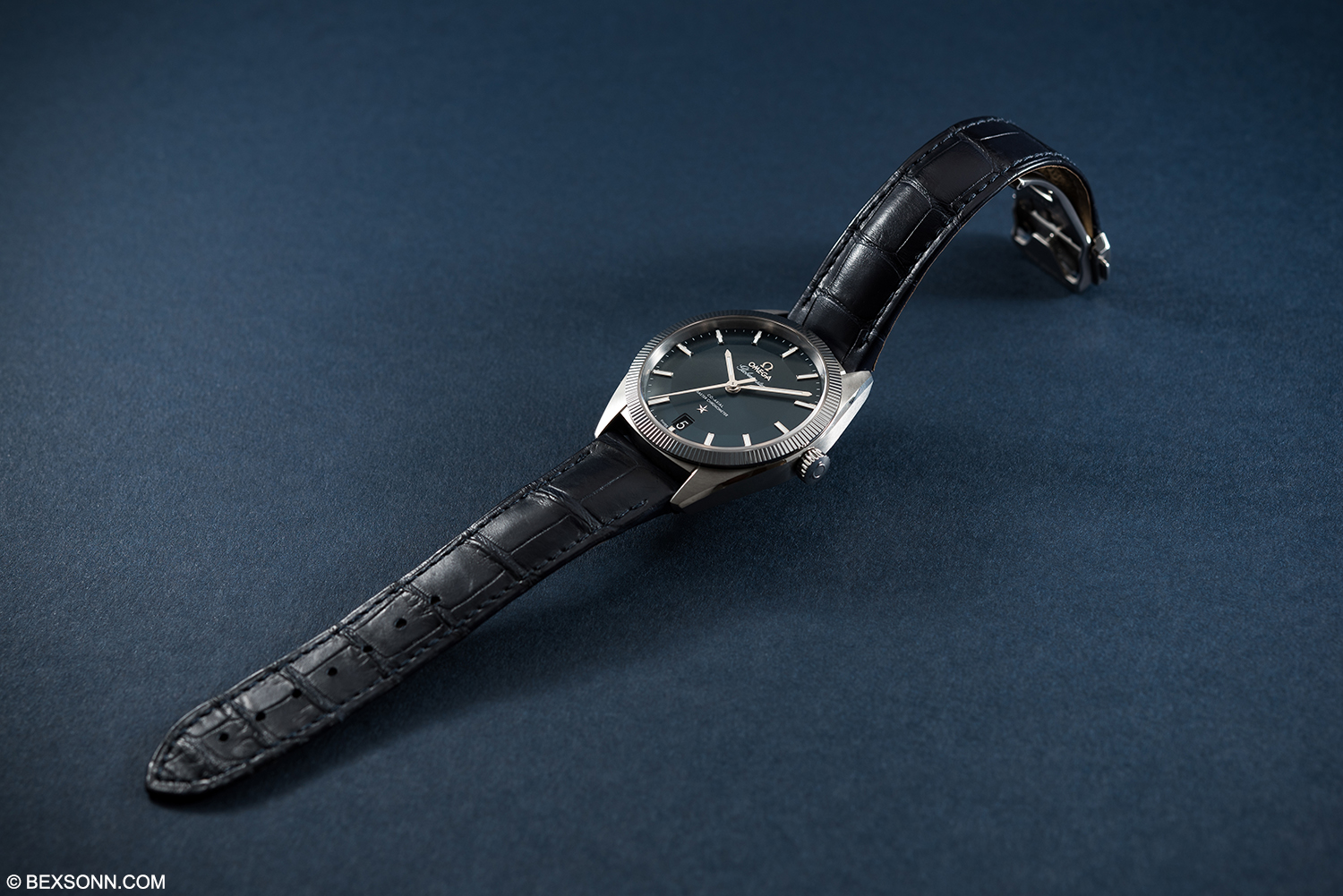 Omega Globemaster Master Chronometer: Officially released during Baselworld 2015, the Globemaster was one of the most discussed timepieces unveiled by Omega. After all, this new timepiece featured something that most would say is heavily associated with Rolex: a fluted bezel. Nevertheless, this is nothing new to Omega and it has indeed featured on Constellation timepieces from back in the 60s. The Globemaster in my honest opinion has everything one could need from a modern dress watch and has a perfect balance of historical elements in a contemporary package. To add to that, the Globemaster is the first timepiece from Omega to feature a METAS certified movement. As it was one of my favourites from the fair, I thought it was only correct that we gave this timepiece a bit of wrist time.
Omega Globemaster Master Chronometer: Officially released during Baselworld 2015, the Globemaster was one of the most discussed timepieces unveiled by Omega. After all, this new timepiece featured something that most would say is heavily associated with Rolex: a fluted bezel. Nevertheless, this is nothing new to Omega and it has indeed featured on Constellation timepieces from back in the 60s. The Globemaster in my honest opinion has everything one could need from a modern dress watch and has a perfect balance of historical elements in a contemporary package. To add to that, the Globemaster is the first timepiece from Omega to feature a METAS certified movement. As it was one of my favourites from the fair, I thought it was only correct that we gave this timepiece a bit of wrist time.
It is fair to assume that at some point in your life you will need a dress watch and while you make the transition from your daily sports watch, the Globemaster may just tick all the right boxes? Let’s face it, most collectors love sports watches because of their sheer presence. In your search for a dress watch, you will need something that still has wrist presence but also has the tact required in your dapper attire. This may not necessarily mean you will only wear it on those shirt and (bow) tie occasions but maybe casually too. It can be hard to find a timepiece that does this well, but I do believe the Globemaster is a stroke of genius from Omega and I shall tell you why. I will start with probably the most important piece of any watches aesthetics: the dial.
 THE DIAL
THE DIAL
 The Globemaster we kindly requested from Omega was the blue dial variant and if you were not aware this could only mean one thing – stainless steel. While Omega’s do not have the same value, as say, a stainless steel Patek Philippe, this was chosen for a specific reason – which we will get to. The dial of the Globemaster as previously mentioned is inspired by the Constellation from the 1950s, which featured what is known by many as a “pie-pan” dial. This effect gives the dial volume but probably not as much as its predecessor, it doesn’t quite have the same effect. The use of inlaid Super-LumiNova block hour markers, that slope off towards the edge of the dial combines the desired look of the Constellation from the 1960s, which was a conscious decision.
The Globemaster we kindly requested from Omega was the blue dial variant and if you were not aware this could only mean one thing – stainless steel. While Omega’s do not have the same value, as say, a stainless steel Patek Philippe, this was chosen for a specific reason – which we will get to. The dial of the Globemaster as previously mentioned is inspired by the Constellation from the 1950s, which featured what is known by many as a “pie-pan” dial. This effect gives the dial volume but probably not as much as its predecessor, it doesn’t quite have the same effect. The use of inlaid Super-LumiNova block hour markers, that slope off towards the edge of the dial combines the desired look of the Constellation from the 1960s, which was a conscious decision.
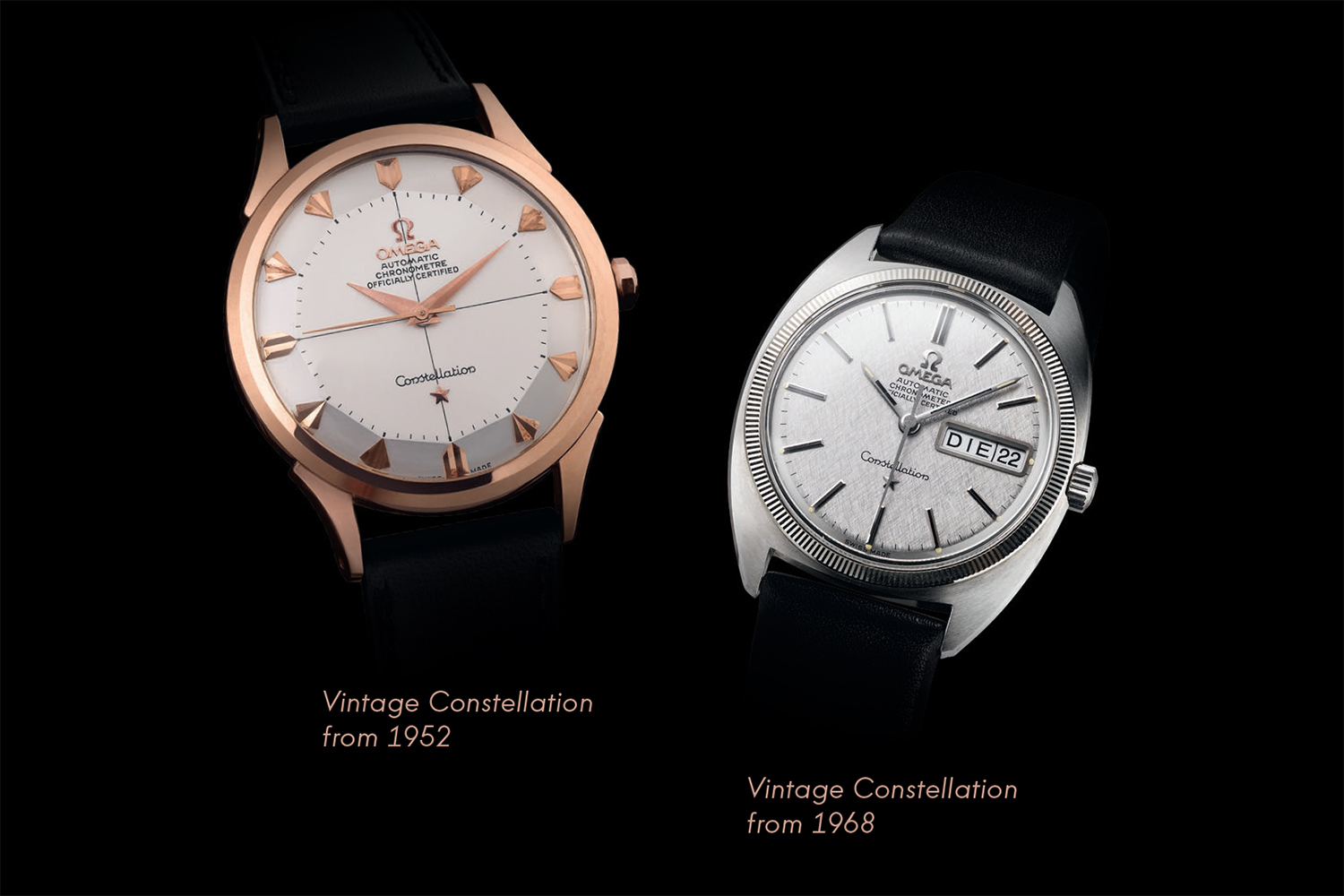 The deep blue dial having been finished in a sun-brushed style adds to the overall effect when hit by light. Nowadays it is pretty much a given that any dress watch will feature a date window and it is no different on the Globemaster but there is a right way of doing so. I think it is important that the date window doesn’t disturb or unbalance the design of the dial. With the date aperture subtly placed at 6 o’clock, its incorporation can go unnoticed.
The deep blue dial having been finished in a sun-brushed style adds to the overall effect when hit by light. Nowadays it is pretty much a given that any dress watch will feature a date window and it is no different on the Globemaster but there is a right way of doing so. I think it is important that the date window doesn’t disturb or unbalance the design of the dial. With the date aperture subtly placed at 6 o’clock, its incorporation can go unnoticed.
 The rather sparse dial only bears an applied Omega logo with the italic inscription of Globemaster below, with the accustomed Co-Axial Master Chronometer at 6 o’clock. Omega have also made use of the applied star, which has adorned many Constellation’s in the past, another nice little touch. The use of Super-LumiNova pencil-style hands, again, is a nod to the constellation from the 1960s and ties in very well with the overall appearance of the dial. A feature that has made an appearance before on other timepieces from Omega is the use of a jumping hour hand, for the frequent flyer, which kind of doubles up as a quickset date function.
The rather sparse dial only bears an applied Omega logo with the italic inscription of Globemaster below, with the accustomed Co-Axial Master Chronometer at 6 o’clock. Omega have also made use of the applied star, which has adorned many Constellation’s in the past, another nice little touch. The use of Super-LumiNova pencil-style hands, again, is a nod to the constellation from the 1960s and ties in very well with the overall appearance of the dial. A feature that has made an appearance before on other timepieces from Omega is the use of a jumping hour hand, for the frequent flyer, which kind of doubles up as a quickset date function.
 THE CASE & STRAP
THE CASE & STRAP
 The stainless steel case of this 39mm Globemaster, somewhat, continues the trend of this timepiece by incorporating design elements of the Constellation of the 1950s and the C-shape Constellation from the 1960s. It is a complete brushed affair with only the bevels that extend to the lugs being polished. This is a much-welcomed touch from Omega as it downplays the Globemasters luxurious appearance, giving it a much more versatile purpose.
The stainless steel case of this 39mm Globemaster, somewhat, continues the trend of this timepiece by incorporating design elements of the Constellation of the 1950s and the C-shape Constellation from the 1960s. It is a complete brushed affair with only the bevels that extend to the lugs being polished. This is a much-welcomed touch from Omega as it downplays the Globemasters luxurious appearance, giving it a much more versatile purpose.
 The one element of the new Globemaster that cannot be ignored is the fluted bezel. For sure it is a feature that we’re probably more accustomed to seeing on a Rolex but one must remember that this is a design feature that has been seen on Omega timepieces of old. The fluted bezel on timepieces of yesteryear actually had a purpose. They were used to fasten the plexi-glass to the case and this wasn’t a design feature that was uncommon among other watch manufacturers at the time. To make sure fluted bezel stands the test of time, Omega have made this particular component of the timepiece out of tungsten.
The one element of the new Globemaster that cannot be ignored is the fluted bezel. For sure it is a feature that we’re probably more accustomed to seeing on a Rolex but one must remember that this is a design feature that has been seen on Omega timepieces of old. The fluted bezel on timepieces of yesteryear actually had a purpose. They were used to fasten the plexi-glass to the case and this wasn’t a design feature that was uncommon among other watch manufacturers at the time. To make sure fluted bezel stands the test of time, Omega have made this particular component of the timepiece out of tungsten.
 The Globemaster sports a subtly domed anti-reflective sapphire crystal, while the case back has been influenced by the historic observatory trials. A medallion stamped with an image of the observatory where the precision competitions took place. This represented the precision awarded to the watchmaker for the outstanding performance of its movements during the famous chronometer observatory trials in the 1940s and 1950s. This case back is nicely fixed in place by four modest screws.
The Globemaster sports a subtly domed anti-reflective sapphire crystal, while the case back has been influenced by the historic observatory trials. A medallion stamped with an image of the observatory where the precision competitions took place. This represented the precision awarded to the watchmaker for the outstanding performance of its movements during the famous chronometer observatory trials in the 1940s and 1950s. This case back is nicely fixed in place by four modest screws.
 Not often do I feel the need to highlight a leather strap but it must be said the piece of animal hide used to fix the Globemaster to your wrist is just about as good as it gets. The blue leather used on this particular model is probably one of the supplest I’ve ever had the pleasure of wearing and coupled with Omega’s deployant clasp, it is pretty much a perfect match.
Not often do I feel the need to highlight a leather strap but it must be said the piece of animal hide used to fix the Globemaster to your wrist is just about as good as it gets. The blue leather used on this particular model is probably one of the supplest I’ve ever had the pleasure of wearing and coupled with Omega’s deployant clasp, it is pretty much a perfect match.
 THE MOVEMENT
THE MOVEMENT
 While the Globemaster’s design pays subtle tributes to the past, more importantly is what Omega have brought to the watchmaking game and horology in general. This is the first watch from Omega to feature a movement that has been certified by the Swiss Federal Institute of Metrology, but just what is this? Know as the METAS for short, in December of 2014, OMEGA held a press conference together with the Swiss Federal Institute of Metrology to announce a new watch certification process that will become active in 2015. The Globemaster is the first watch to be tested and approved according to this new process, which, in addition to measuring the performance of the watch in daily wearing conditions, ensures that it functions properly when exposed to strong magnetic fields of 15,000 gauss. Any watch brand can submit its watches for these METAS-approved tests in order to receive Master Chronometer standing, a label that at once makes a statement about the quality of not only the mechanical movement but also of the watch itself.
While the Globemaster’s design pays subtle tributes to the past, more importantly is what Omega have brought to the watchmaking game and horology in general. This is the first watch from Omega to feature a movement that has been certified by the Swiss Federal Institute of Metrology, but just what is this? Know as the METAS for short, in December of 2014, OMEGA held a press conference together with the Swiss Federal Institute of Metrology to announce a new watch certification process that will become active in 2015. The Globemaster is the first watch to be tested and approved according to this new process, which, in addition to measuring the performance of the watch in daily wearing conditions, ensures that it functions properly when exposed to strong magnetic fields of 15,000 gauss. Any watch brand can submit its watches for these METAS-approved tests in order to receive Master Chronometer standing, a label that at once makes a statement about the quality of not only the mechanical movement but also of the watch itself.
Before the watch is exposed to the magnetic field and its performance is measured according to the criteria approved by METAS, the movement must pass the tests established by the Contrôle Officiel Suisse des Chronomètres (COSC). Along with their watch, customers will receive a certification card that includes an identification number that they can use to see how their watches performed on each test. This documentation is proof that the watch has been certified by METAS. Though it will be interesting to see, if any, which watch manufactures will submit their pieces.
 Turning the timepiece over and peering through the scratch-resistant sapphire crystal, you see the in-house Co-Axial Master Chronometer calibre 8900 (8901 if the case is made of gold) that has been finished in arabesque Geneva waves. The calibre 8900 makes use of a silicon balance spring, which is inherently anti-magnetic but it also make use of anti-magnetic alloys for other important components. While these parts cannot be fully observed through the case back, I think from a horological standpoint it’s a pleasure to know. After all, Omega are the only watch brand to have succeeded in developing a timepiece that can withstand 15,000 gauss, which was first seen in the Aqua Terra 15K gauss.
Turning the timepiece over and peering through the scratch-resistant sapphire crystal, you see the in-house Co-Axial Master Chronometer calibre 8900 (8901 if the case is made of gold) that has been finished in arabesque Geneva waves. The calibre 8900 makes use of a silicon balance spring, which is inherently anti-magnetic but it also make use of anti-magnetic alloys for other important components. While these parts cannot be fully observed through the case back, I think from a horological standpoint it’s a pleasure to know. After all, Omega are the only watch brand to have succeeded in developing a timepiece that can withstand 15,000 gauss, which was first seen in the Aqua Terra 15K gauss.
That said 15,000 gauss does sound rather extreme and is this advancement in watchmaking relevant in today’s world? In all honesty probably not but magnetism is still a bit of a hazard that rears its head in odd little places, ranging from mobile phones to laptops and what not. But I think it is safe to say that with the Globemaster on your wrist, this is for sure much less of a worry.
 FINAL THOUGHTS
FINAL THOUGHTS
 Personally, I like the new Globemaster and I say new because it is indeed not a new range but more of a continuation of old. You see, the first Globemaster was actually the Constellation but renamed for the American market for legal reasons. Another company in the U.S. owned the name Constellation, at the time of the launch into the American market, so the name Globemaster was used.
Personally, I like the new Globemaster and I say new because it is indeed not a new range but more of a continuation of old. You see, the first Globemaster was actually the Constellation but renamed for the American market for legal reasons. Another company in the U.S. owned the name Constellation, at the time of the launch into the American market, so the name Globemaster was used.
The Globemaster is a very versatile wrist companion. While it is a dress watch by virtue of its design, it actually embraces casual attire rather well; I would even go as far as saying you can still wear it with rather sporty attire too. The all brushed surfaces of the Globemaster (especially in steel), bar the few polished bevels mentioned above, really enhances this watches versatile capabilities. The case measure in at 39mm, which on paper isn’t very big, but because of the dials simplistic and uncluttered layout, you’d be forgiven for thinking it was actually around the 40mm mark. On the wrist, it wears beautifully coupled with that leather strap I spoke of – it is indeed one of the most comfortable timepieces I’ve worn.
 The pie-pan dial is a lovely little feature, which harks back to the Constellation of old but it just falls short a little of the overall effect. I’ve mentioned my thoughts on the bezel before and they haven’t changed, again, it is a nostalgic little touch by Omega, tying in two traits from the Globemaster’s vintage counterparts. However, this may be somewhat of a problem for some because the Globemaster does lack a little of the charm and endearment of the 1950s and 60s Constellation; it can be forgiven of its shortcomings in this department, as it more than makes up for it in its technological prowess.
The pie-pan dial is a lovely little feature, which harks back to the Constellation of old but it just falls short a little of the overall effect. I’ve mentioned my thoughts on the bezel before and they haven’t changed, again, it is a nostalgic little touch by Omega, tying in two traits from the Globemaster’s vintage counterparts. However, this may be somewhat of a problem for some because the Globemaster does lack a little of the charm and endearment of the 1950s and 60s Constellation; it can be forgiven of its shortcomings in this department, as it more than makes up for it in its technological prowess.
The new Globemaster is available in a range of variations as mentioned above and prices will range from £4,785 – £13,670, with the exception of the Platinum version that is limited to 352 pieces and will retail for £28,100. For more information on the new Globemaster visit the official Omega website.

